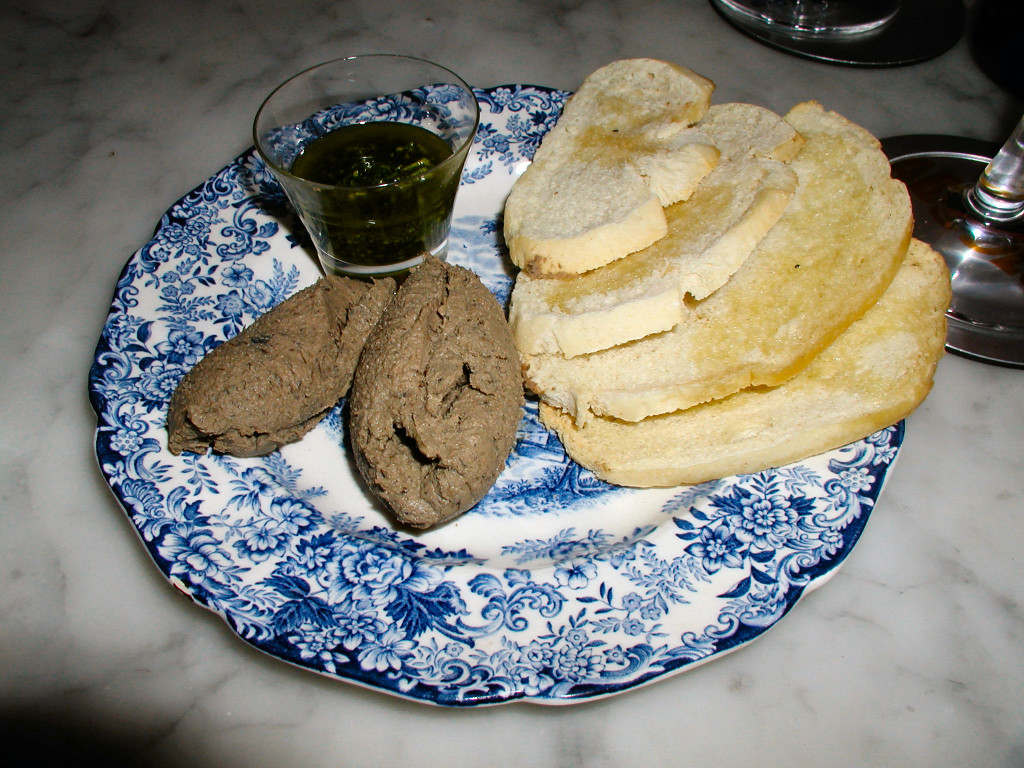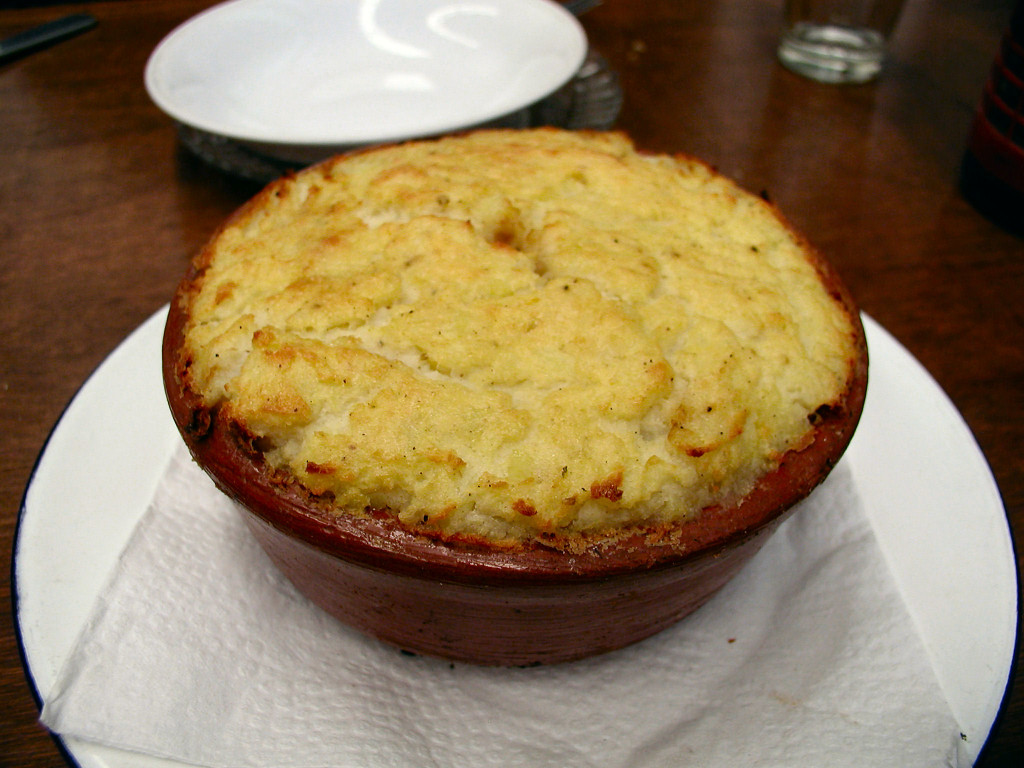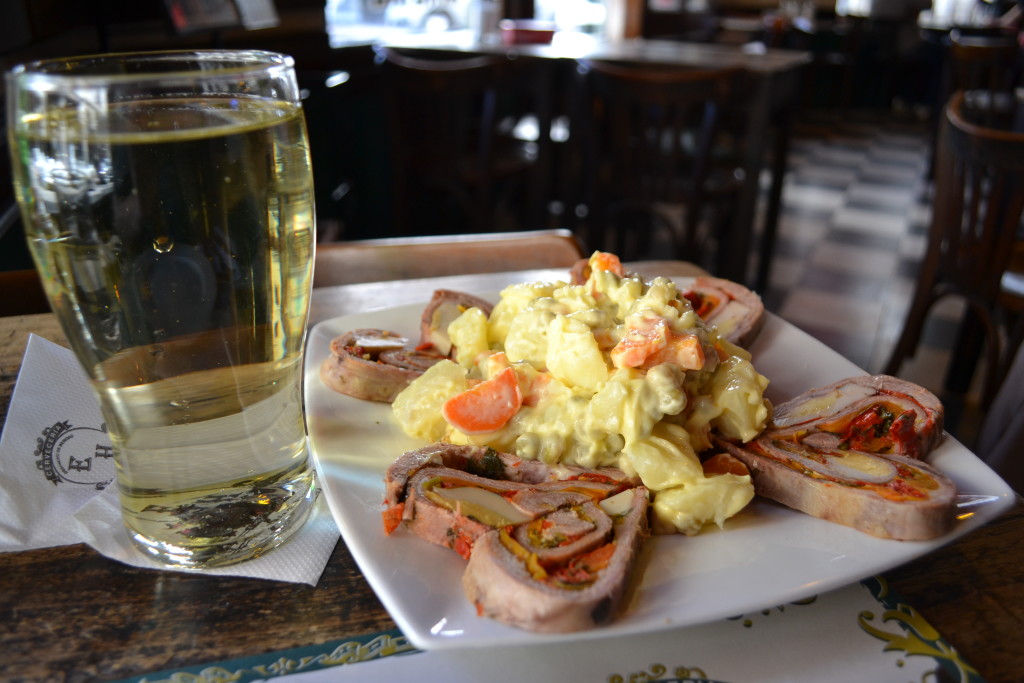March 2007, page 54-55
Argentina for beginners
Coming into this month there are so many things to look at – it’s Women’s month, we’re moving into the end of summer and harvest season, and, of course there are important dates like St. Patrick’s Day and the change in Daylight Savings Time, which affects us here in Argentina only in that it changes our time relationship to the rest of the world by an hour.
 My first thoughts for a month devoted to women, leprechauns aside, were to look at a couple of favorite restaurants that are owned and run by women. Of my three favorites, I’ve covered one in a recent column, El Federal, so I’ll have to pass on covering it again. The others are both favorite lunch spots. I almost hesitate to cover it, as it’s a tiny little spot with only fourteen seats. On the other hand, the woman who owns it, María Laura D´Aloisio, and her brother, are about to open a second, larger spot, with the same theme, but for dinner. They’re not giving up the original space, so both will continue. The restaurant is Florencio, and it’s located up on the hill behind the British Embassy in Recoleta, at Francisco de Vittoria 2363, 4807-6477. It’s not easy to find, but it’s worth making the effort. Maria Laura makes what are quite possibly the best sandwiches in the city, not to mention her other dishes – well, one, easily the best chicken liver mushroom paté around. Start with the fact that she makes all her own bread, working with just one assistant in a kitchen the size of standard bathroom. Add to that pristinely fresh ingredients, in delicious combinations, friendly service, and an intimate atmosphere, and she’s simply got a completely winning setup. Maria Laura is fanatical, there’s no other word for it, about the quality of both what goes into her food, and its presentation, and it shows. It’s open for lunch Monday through Saturday, and dinner Tuesday and Friday only. When I first hear that she was opening a second, and larger spot, I began to worry – would my beloved lunch spot disappear? But, she claims there are no worries to be had, she will continue to operate the original Florencio for lunch, and the new locale will be their focus for dinner – which probably means eliminating the two evenings of dinner service at the original spot. The new venue will be on Avenida Libertador, just the other side of the Palais du Glace.
My first thoughts for a month devoted to women, leprechauns aside, were to look at a couple of favorite restaurants that are owned and run by women. Of my three favorites, I’ve covered one in a recent column, El Federal, so I’ll have to pass on covering it again. The others are both favorite lunch spots. I almost hesitate to cover it, as it’s a tiny little spot with only fourteen seats. On the other hand, the woman who owns it, María Laura D´Aloisio, and her brother, are about to open a second, larger spot, with the same theme, but for dinner. They’re not giving up the original space, so both will continue. The restaurant is Florencio, and it’s located up on the hill behind the British Embassy in Recoleta, at Francisco de Vittoria 2363, 4807-6477. It’s not easy to find, but it’s worth making the effort. Maria Laura makes what are quite possibly the best sandwiches in the city, not to mention her other dishes – well, one, easily the best chicken liver mushroom paté around. Start with the fact that she makes all her own bread, working with just one assistant in a kitchen the size of standard bathroom. Add to that pristinely fresh ingredients, in delicious combinations, friendly service, and an intimate atmosphere, and she’s simply got a completely winning setup. Maria Laura is fanatical, there’s no other word for it, about the quality of both what goes into her food, and its presentation, and it shows. It’s open for lunch Monday through Saturday, and dinner Tuesday and Friday only. When I first hear that she was opening a second, and larger spot, I began to worry – would my beloved lunch spot disappear? But, she claims there are no worries to be had, she will continue to operate the original Florencio for lunch, and the new locale will be their focus for dinner – which probably means eliminating the two evenings of dinner service at the original spot. The new venue will be on Avenida Libertador, just the other side of the Palais du Glace.

Thinking along other lines, harvest season brings to mind the cornucopia of fresh ingredients that area available here. While most folks think about Buenos Aires in terms of its beef, one of the things I love about the city is the constant access to fresh, seasonal produce. I just wish more restaurants would take advantage of the bounty at their fingertips. But this also gives me the opportunity to offer up another favorite lunch spot, also run by a woman, Carmen Paz, even though she says she’s part of a team of owners, it only takes a few minutes of watching the activity to know who’s pretty much running the show. The spot, Providencia, located behind a bright orange door that has a sign telling you to knock loudly, at Cabrera 5995, corner of Arevalo, in Palermo, 4772-8507, which is also the site of Los 7 Panes bakery, easily one of the best spots for bread in the entire city. The restaurant serves up vegetarian cuisine, though we’re not talking about chewy brown food and bean sprouts, we’re talking about creative tarts, stews, soups, and pastas – when they have it, don’t miss out on their masa crocante rellena, a large baked pasta round folded over a delicious amalgam of vegetables and cheeses. Like Florencio, Providencia is primarily just a lunch spot, and only opens for dinner on occasional nights when the weather is nice and they’re in the mood.
This section, the “Best Value March 07” for Bodega Sur de los Andes was not something I wrote. It was inserted into the middle of my column by the editors as a promotion (the owner of the bodega is the brother of the editor-in-chief of the magazine). Not that I particularly object, I happen to like Sur de los Andes wines quite a bit. My original copy featured recommendations for two Cabernet Franc based wines from Finca Morera and Kaufmann, reproduced below the insert.
 March’s Best Value 07. Sur de los Andes experienced the greatest growth of any Argentine producer in to the U.S. in 2006, rising more than 150 places to finish in 42nd position among all exporters. For the last year, U.S. sales reached U$D 298,000 from just over 7,000 twelve bottle cases. An Argentine businessman created Sur de los Andes in September 2005. In the first year since inception, the bodega has positioned itself as an important player in the United States, gaining market position over many prestigious Argentine wineries. Much of the credit for this success is due to the excellent price/quality ratio of the portfolio and to the winemaking ability of Pablo Durrigutti who is in complete control of all phases of the winemaking operation. The total amount of Argentine wine exported to the United States during 2006, not including bulk wine, was U$D 69.4 million dollars from 2.4 million cases. Argentine wine sales to the U.S. dominate those to other marketplaces, amounting to 25% of all Argentine exports. This is clearly shown by the fact that the next three leading importers of Argentine wine, The United Kingdom, Brazil and Canada, together import 27%. For the year 2006 a record total of 224 producers exported wine to the United States – with the top ten wineries representing 50% of sales. In its first full year of operation, Bodega Sur de los Andes was able to introduce its portfolio into 22 of the 48 contiguous states in the United States including the largest and most competitive: New York, California, Texas and Florida. Sur de los Andes produces wines from the traditional Argentine grapes, Malbec, Bonarda and Torrontés, with one blend of Malbec and Cabernet Sauvignon all at the basic level. There are two reserve level products, a Malbec and a Bonarda and a premium product, Malbec Grand Reserve. The company also plans to increase their presence considerably in the local Argentine market, focusing on wine shops and restaurants of mid and high-level cuisine.
March’s Best Value 07. Sur de los Andes experienced the greatest growth of any Argentine producer in to the U.S. in 2006, rising more than 150 places to finish in 42nd position among all exporters. For the last year, U.S. sales reached U$D 298,000 from just over 7,000 twelve bottle cases. An Argentine businessman created Sur de los Andes in September 2005. In the first year since inception, the bodega has positioned itself as an important player in the United States, gaining market position over many prestigious Argentine wineries. Much of the credit for this success is due to the excellent price/quality ratio of the portfolio and to the winemaking ability of Pablo Durrigutti who is in complete control of all phases of the winemaking operation. The total amount of Argentine wine exported to the United States during 2006, not including bulk wine, was U$D 69.4 million dollars from 2.4 million cases. Argentine wine sales to the U.S. dominate those to other marketplaces, amounting to 25% of all Argentine exports. This is clearly shown by the fact that the next three leading importers of Argentine wine, The United Kingdom, Brazil and Canada, together import 27%. For the year 2006 a record total of 224 producers exported wine to the United States – with the top ten wineries representing 50% of sales. In its first full year of operation, Bodega Sur de los Andes was able to introduce its portfolio into 22 of the 48 contiguous states in the United States including the largest and most competitive: New York, California, Texas and Florida. Sur de los Andes produces wines from the traditional Argentine grapes, Malbec, Bonarda and Torrontés, with one blend of Malbec and Cabernet Sauvignon all at the basic level. There are two reserve level products, a Malbec and a Bonarda and a premium product, Malbec Grand Reserve. The company also plans to increase their presence considerably in the local Argentine market, focusing on wine shops and restaurants of mid and high-level cuisine.
While of course Argentina is most associated with Malbec, folks often forget that many other grape varieties go into the wines here. Not just the usual suspects like Merlot and Cabernet Sauvignon, but many interesting Italian and French varietals as well. One of my favorites grapes is the Cabernet Franc – one of the two parents of the cross that produced Cabernet Sauvignon, the other being Sauvignon Blanc – yes, a white grape. Cabernet Franc tends to be more rustic in style than it’s offspring, with complex flavors of olives and bacon fat blended beautifully with rich red fruits.
One of the interesting things about the grape is that it lends itself well to both rich, full bodied wines – there are some spectacular Bordeaux that are nearly all Cabernet Franc, as well as some Italian wines – and to light, easy drinking styles, like many of the Loire Valley reds. Here in Argentina it’s a less commonly grown grape, but when cared for, produces some excellent wines. My two favorites are the Finca Morera, a delicious tasting red that leans towards the lighter side with flavors of red plums, dried herbs, and green olives; and the Kaufman, a full bodied blend of mixed red fruits, spices, dried tobacco leaf, and green olives. Both are excellent, and both are great late summer wines – I recommend the former with poultry and richer fish dishes, and the latter is a great alternative to Malbec with that steak right off the parrilla.

I often get asked about what are the “must try” dishes in Buenos Aires other than a good steak. One of my favorites, and probably a favorite of most of the population, is the matambre relleno. Not to be confused with the cut of meat called a matambre, which is a skirt steak, or sometimes used to refer to a flank steak, this dish makes use of that cut of meat rolled around a filling that’s usually made up of hard boiled eggs, carrots, spinach, peppers, and onions. It’s poached and then roasted, and generally served chilled or room temperature in slices, accompanied by another local fave, the ensalada rusa, a mix of diced potato, carrots, and peas with a mayonnaise dressing. It’s also sometimes served napolitana style, which means the slices are topped with a little tomato sauce and mozzarella cheese, and then stuck under a broiler to get all browned and bubbly. Either way, it’s a don’t miss appetizer in local restaurants.
In October 2006, I started writing for this Spanish language magazine, covering their English language section for travellers. I wrote for them for about two years. The copy editor, apparently not fluent in English, used to put each paragraph in its own text box on a two column page, in what often seemed to be random order, making the thread of the column difficult to follow. I’ve restored the paragraphs to their original order.